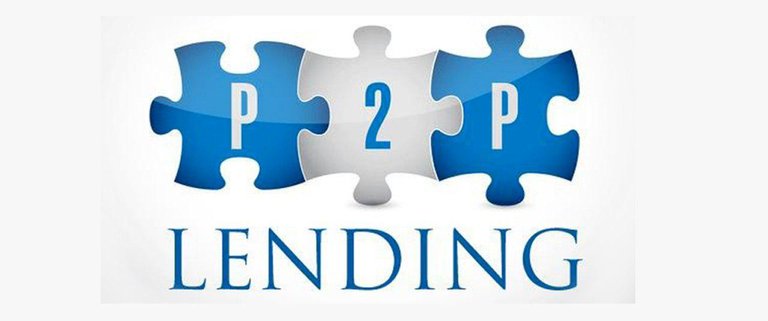
Peer-to-peer (P2P) lending is a method of debt financing that enables individuals to borrow and lend money without the use of an official financial institution as an intermediary. Peer-to-peer lending removes the middleman from the process, but it also involves more time, effort and risk than the general brick-and-mortar lending scenarios.
P2P lending is also known as social lending or crowd lending.
Traditionally, individuals and small businesses who want a loan usually apply for one through the bank. The bank would run extensive financial checks on the applicant’s credit history to determine if the entity would qualify for a loan and if yes, determines the interest rate that will be charged on the loan. Individuals that want to avoid being charged high interest rates or that would otherwise be rejected for a loan application due to poor credit history, may opt for an alternative way of borrowing funds — peer-to-peer lending.
With peer-to-peer lending, borrowers take loans from individual investors who are willing to lend their own money for an agreed interest rate. The profile of a borrower is usually displayed on a peer-to-peer online platform where investors can assess these profiles to determine whether they would want to risk lending money to a borrower. A borrower might receive the full loan amount or only a portion of what he asked for from an investor. In the case of the latter, the remaining portion of the loan may be funded by one or more investors in the peer lending marketplace. In peer-to-peer lending, a loan may have multiple sources and monthly repayment has to be made to each of the individual sources.
P2P platforms connect borrowers to investors with attractive interest rates. For lenders, the loans generate income in the form of interest which can often exceed the interest amount that can be earned through savings vehicles, such as saving accounts and CDs. In addition, an investor is able to earn a higher return on his investment than he can get from the stock market through the interest payments he receives monthly from the borrower. On the other hand, P2P loans give borrower’s access to financing that they may not have gotten approval for from standard financial intermediaries. Furthermore, a borrower gets a more favorable interest rate on her loan than one she would otherwise have gotten from a bank.
Peer-to-peer lending is a form of crowd funding that offers personal unsecured loans to individuals and small businesses looking to take out student loans, commercial and real estate loans, payday loans, etc. Lenders that prefer secured loans will usually take as collateral, luxury assets such as watches, jewelry, and fine art. However, as with traditional lending contracts, it is possible that a borrower may default on a loan. Since investment in a peer loan is not secured by any government guarantee, lenders have the option of choosing who to give funds to and have the advantage of diversifying their available funds among different borrowers.
Peer-to-peer intermediaries are for-profit companies that provide the platform which pairs borrowers and individual lenders. Individuals and businesses that need funding for personal or commercial projects need to file an application with these intermediaries which will assess their credit risk, determine a credit rating, and apply an interest rate to their profiles. The monthly repayments are also made through the P2P intermediary which processes and forwards the payments to the lenders who invested in the loan.
Lending Club, the world’s largest P2P lending platform as of 2017, offers loans in the range of $1,000 to $35,000 to individuals, and $15,000 to $350,000 to businesses over fixed periods of 36 or 60 months. The interest rate charged for borrowed funds falls between 5.32% and 30.99%, depending on the loan grade or creditworthiness of the borrowing entity. Lending Club charges investors a fee equal to 1% of the amount of borrower payments received within 15 days of the due date of the loan. The borrower pays an origination fee that ranges from 1% to 5%, depending on the credit grade that the company assigns to him or her. Payments that bounce back are charged $15, and borrowers that are more than 15 days late on their scheduled payments are charged either 5% or $15, whichever is greater.
Because each state has its own regulations with regard to lending, peer-to-peer lending is not allowed everywhere. For example, Iowa, North Carolina, and New Mexico have constrained the ability to invest through peer-to-peer platforms. Investors and borrowers should, therefore, ensure to check whether their states permit P2P lending before registering with a P2P intermediary.
Join PCCL with the journey and stay tuned.
Await the Big Change.
· INFORMATION SOURCE — https://www.investopedia.com/terms/p/peer-to-peer-lending.asp
By Meleeza Ratnayake
Hi! I am a robot. I just upvoted you! I found similar content that readers might be interested in:
https://www.investopedia.com/terms/p/peer-to-peer-lending.asp